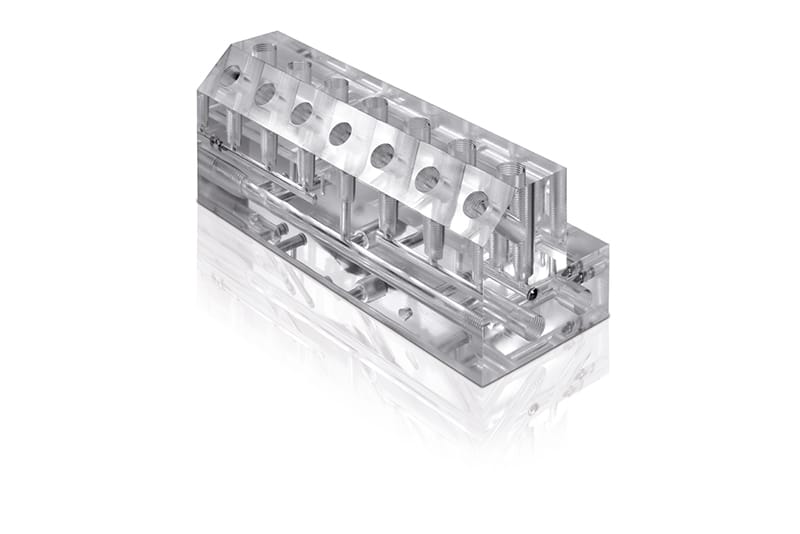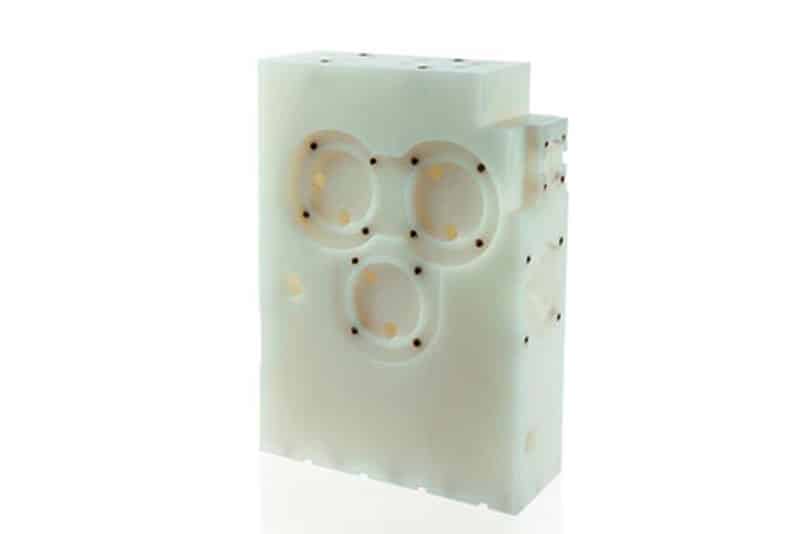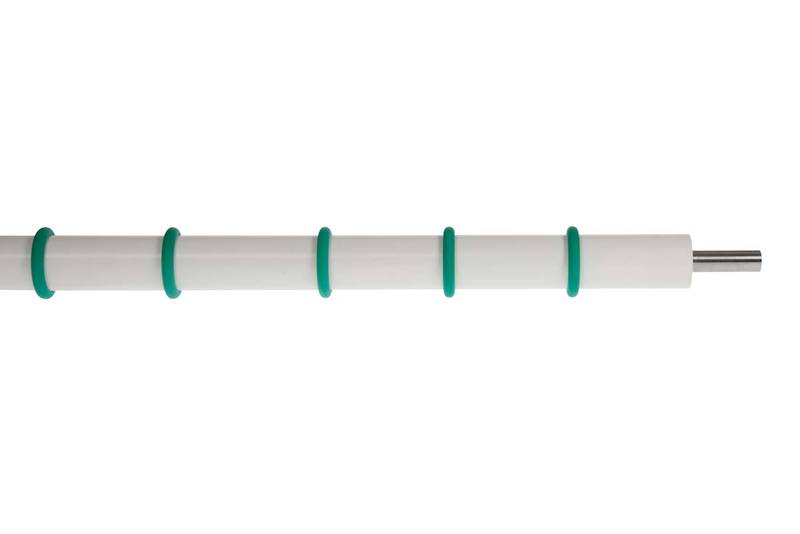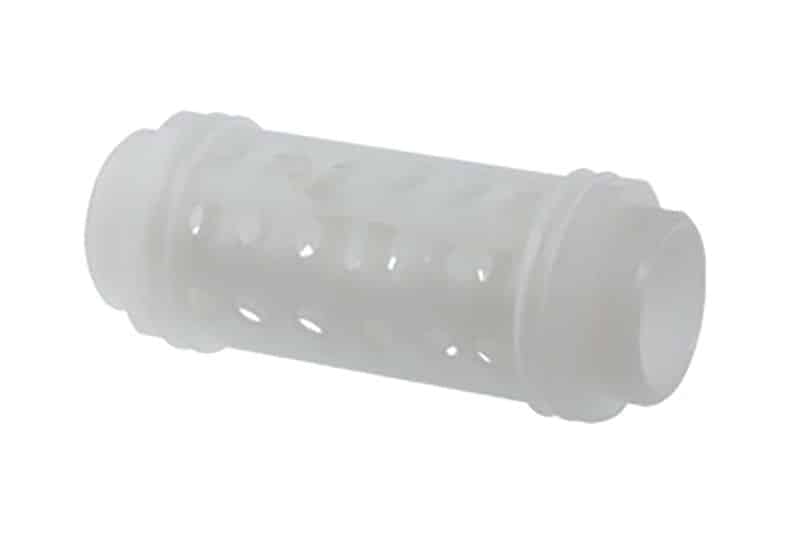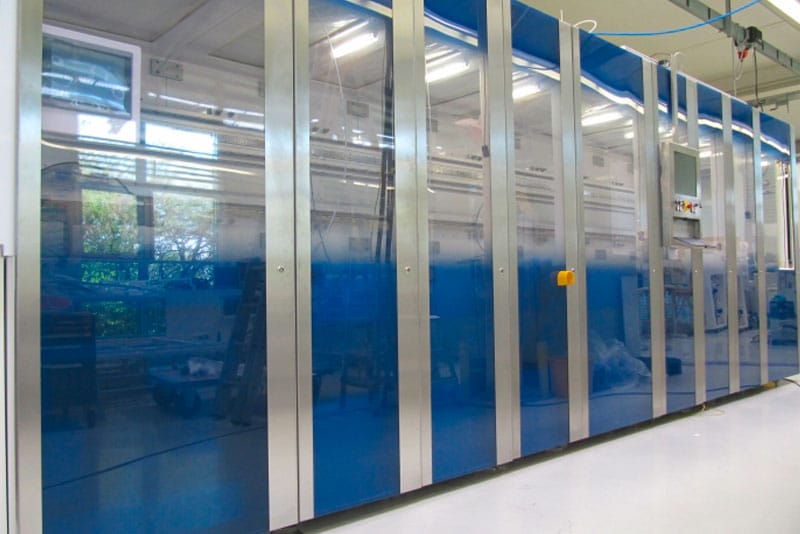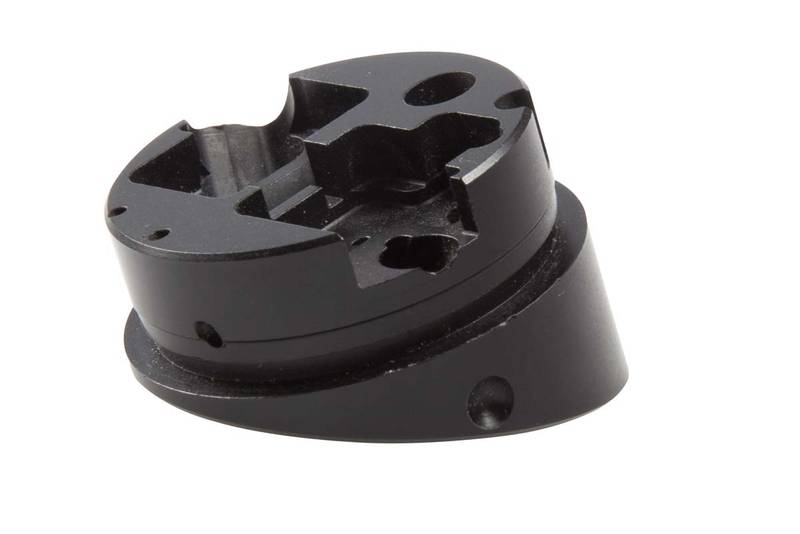Plastic parts for laboratory and analysis technology
In laboratory and analysis technology, as in medical technology, the highest requirements apply to the components and materials used. Highest accuracy and surface quality are the prerequisite for safe use. The components are often exposed to extreme conditions such as increased or constantly changing temperatures or aggressive chemicals. Furthermore, these components are often used in potentially explosive atmospheres. Modifications can be made to achieve electrically conductive, antistatic or static dissipative properties. In laboratory and analysis technology, our many years of experience in the processing of transparent plastics helps us. We are able to manufacture highly transparent components and thus ensure that the function or the medium can be checked in the application. By polishing the components, we also achieve a very high surface quality, which makes it more difficult for residues to adhere and facilitates cleaning of the components.
In the field of laboratory and analysis technology, plastics are mainly used that have the following properties:
- Very high chemical resistance
- Hydrolysis & Sterilization Resistance
- High mechanical strength, stiffness and dimensional stability
- low moisture absorption
- Temperature resistance over a wide temperature range
- transparent plastics
- weldable plastics
- Laser marking possible – Traceability
